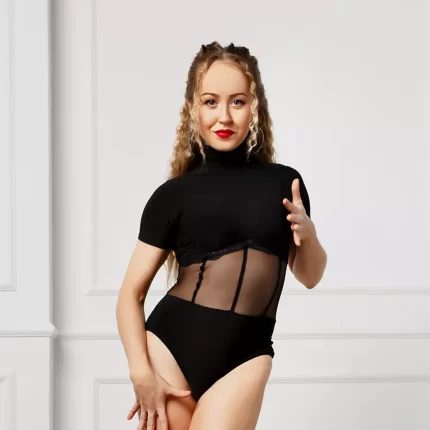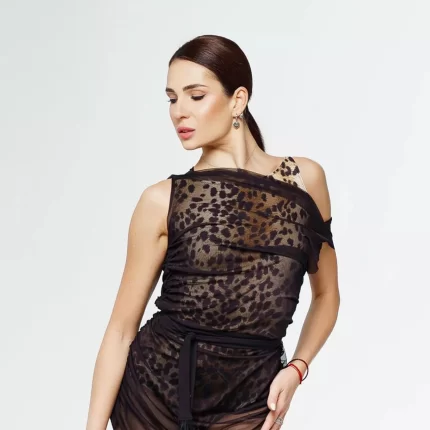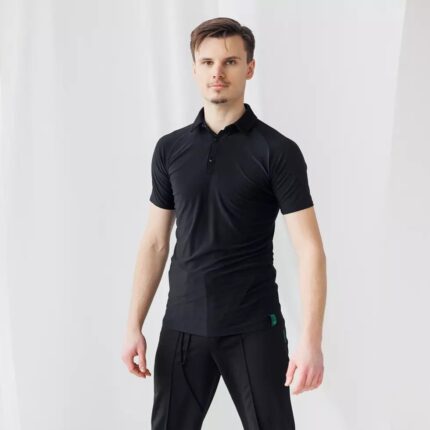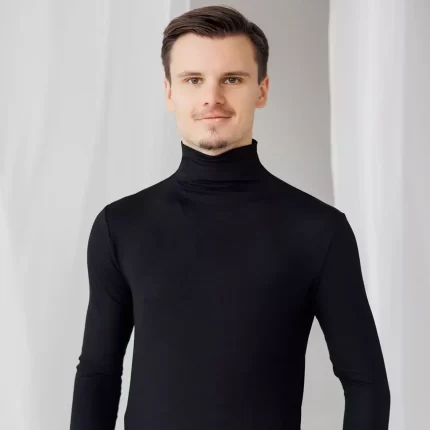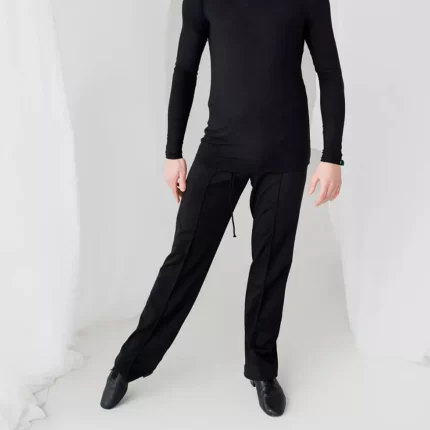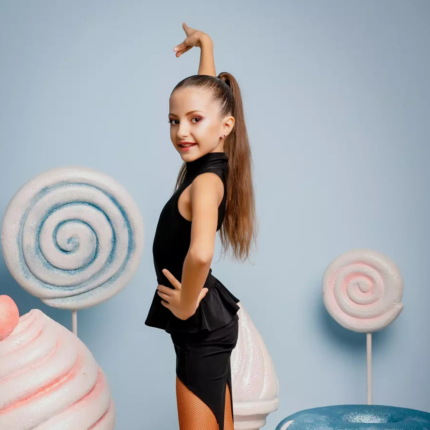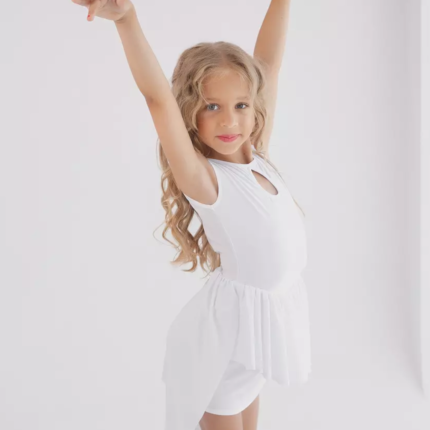Table of Contents
Introduction
For dancers seeking both comfort and style in their training, the practice skirt is a wardrobe essential. More than just a beautiful garment, a dance practice skirt can enhance your movement, boost your confidence, and allow you to express your personal style during rehearsals and classes. This guide explores the world of dance skirts, focusing on how they can elevate your dance practice. We’ll delve into the different types of practice skirts available, discuss fabric choices, and offer tips on styling your skirt for a look that’s both functional and fashionable. Get ready to discover how the right comfortable dance skirt can help you spin and twirl with ease and grace!
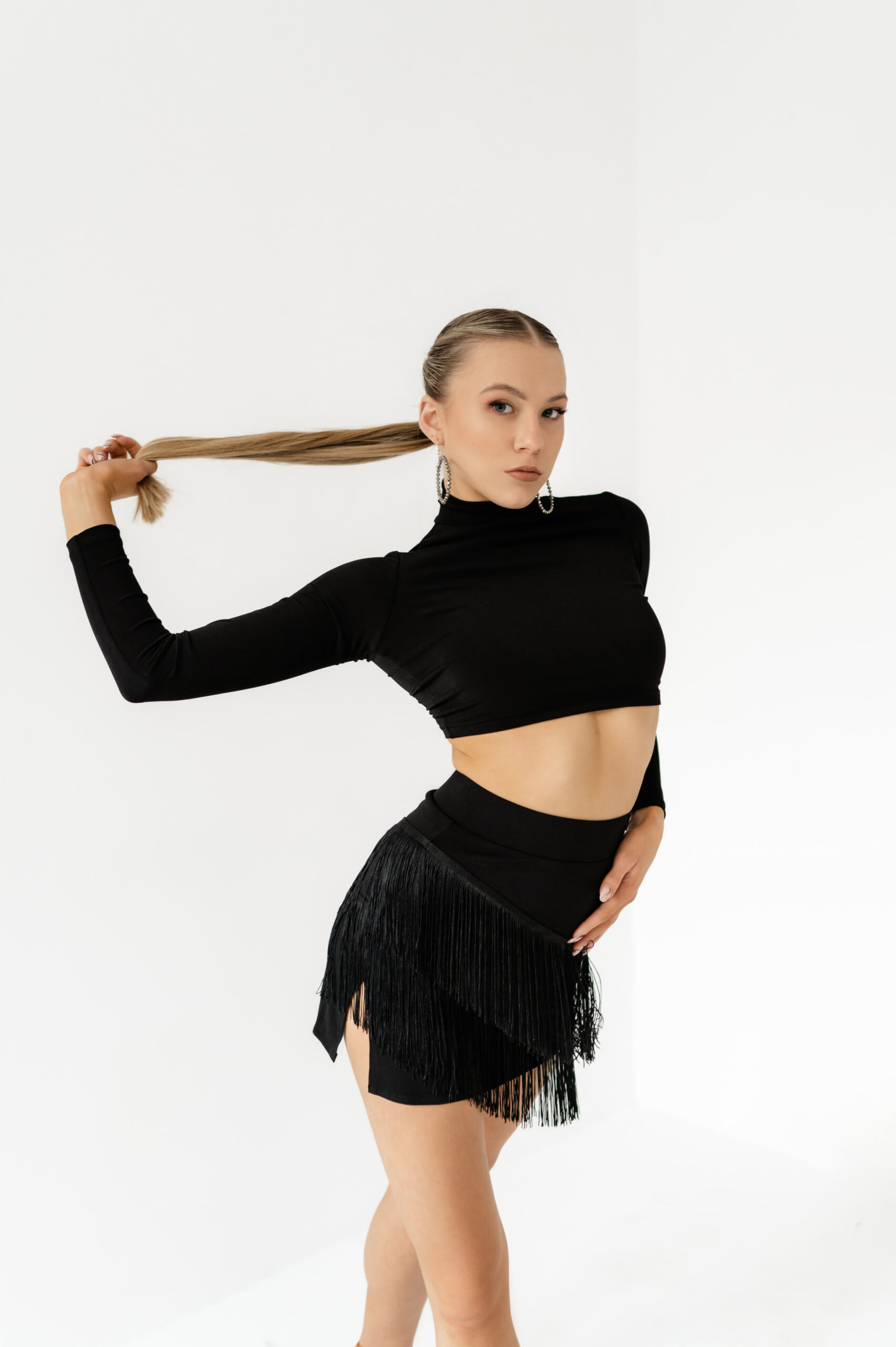
Section 1: Why Choose a Practice Skirt?
While pants and leggings are staples in many dancers’ wardrobes, there’s something special about the practice skirt. This section explores the unique benefits of incorporating a dance skirt into your practice routine. From the enhanced freedom of movement and flow to the style and confidence boost it provides, a practice skirt can transform your dance experience. Let’s discover why a skirt might be the perfect addition to your dance bag!
1.1 Freedom of Movement and Flow
One of the primary reasons dancers choose a practice skirt is the unparalleled freedom of movement and flow it offers. Unlike pants or leggings, a skirt allows for unrestricted movement of the legs and hips, enabling you to execute steps with greater ease and fluidity. The feeling of air around your legs as you move can be incredibly liberating, enhancing your connection to the music and your own body.
Here’s a closer look at how a flowing dance skirt enhances movement:
- Unrestricted leg movement: Skirts, especially those with fuller cuts or slits, allow for a complete range of motion in the legs. Imagine executing a grand jeté or a series of pirouettes. A skirt allows the full extension of the limbs without any fabric resistance, making these movements feel more effortless and look more visually appealing.
- Enhanced fluidity: The movement of a skirt adds a visual dimension to your dancing, accentuating the flow and grace of your movements. As you turn and leap, the skirt responds to your every move, creating a beautiful, dynamic interplay between your body and the fabric. This is particularly beneficial in styles like ballet, lyrical, and ballroom, where fluidity and grace are paramount.
- Freedom and comfort while dancing: A skirt’s airy design promotes ventilation and prevents the feeling of being constricted. This added comfort allows you to focus on your technique and artistry without being distracted by uncomfortable clothing. You can fully immerse yourself in the dance, feeling the music and expressing yourself through movement.
- Psychological Impact: There is also a psychological component. Wearing a skirt can make you feel more graceful and fluid, and this feeling can translate into your movement, creating a positive feedback loop.
The right practice skirt can make a significant difference in how you experience dance. By allowing for enhanced movement and a greater sense of freedom, a skirt can help you connect more deeply with your body and express yourself more fully through movement. At Fashion Dance, we understand this connection. We offer a wide selection of skirts with movement in mind, crafted from fabrics that flow and drape beautifully, allowing you to dance with unrestricted freedom and grace.
1.2 Style and Confidence Boost
Beyond the practical benefits of enhanced movement, a stylish dance skirt can also provide a significant confidence boost in the dance studio. Feeling good in what you wear can positively impact your performance and overall enjoyment of dance practice.
Here’s how a practice skirt can elevate your style and confidence:
- Expressing your personal style: Dance skirts come in a wide variety of styles, lengths, colors, and fabrics. This allows you to choose skirts that reflect your individual taste and personality, making you feel more comfortable and confident during practice.
- Feeling confident: When you feel good about how you look, it can translate into greater confidence in your movements. A flattering skirt can make you feel more graceful, elegant, and poised, which can positively impact your dancing.
- Enhanced body awareness: Wearing a skirt can make you more aware of your lines and how your body moves through space. This heightened awareness can contribute to improved technique and artistry.
- Motivation and inspiration: Putting on a beautiful dance skirt can help you get into the right mindset for practice, making you feel more motivated and inspired to work hard and improve your skills.
At Fashion Dance, we offer a diverse collection of stylish dance skirts designed to make you feel confident and beautiful. Choosing a skirt that makes you feel good can transform your practice experience, allowing you to express your personal style and approach your training with renewed enthusiasm and self-assurance.
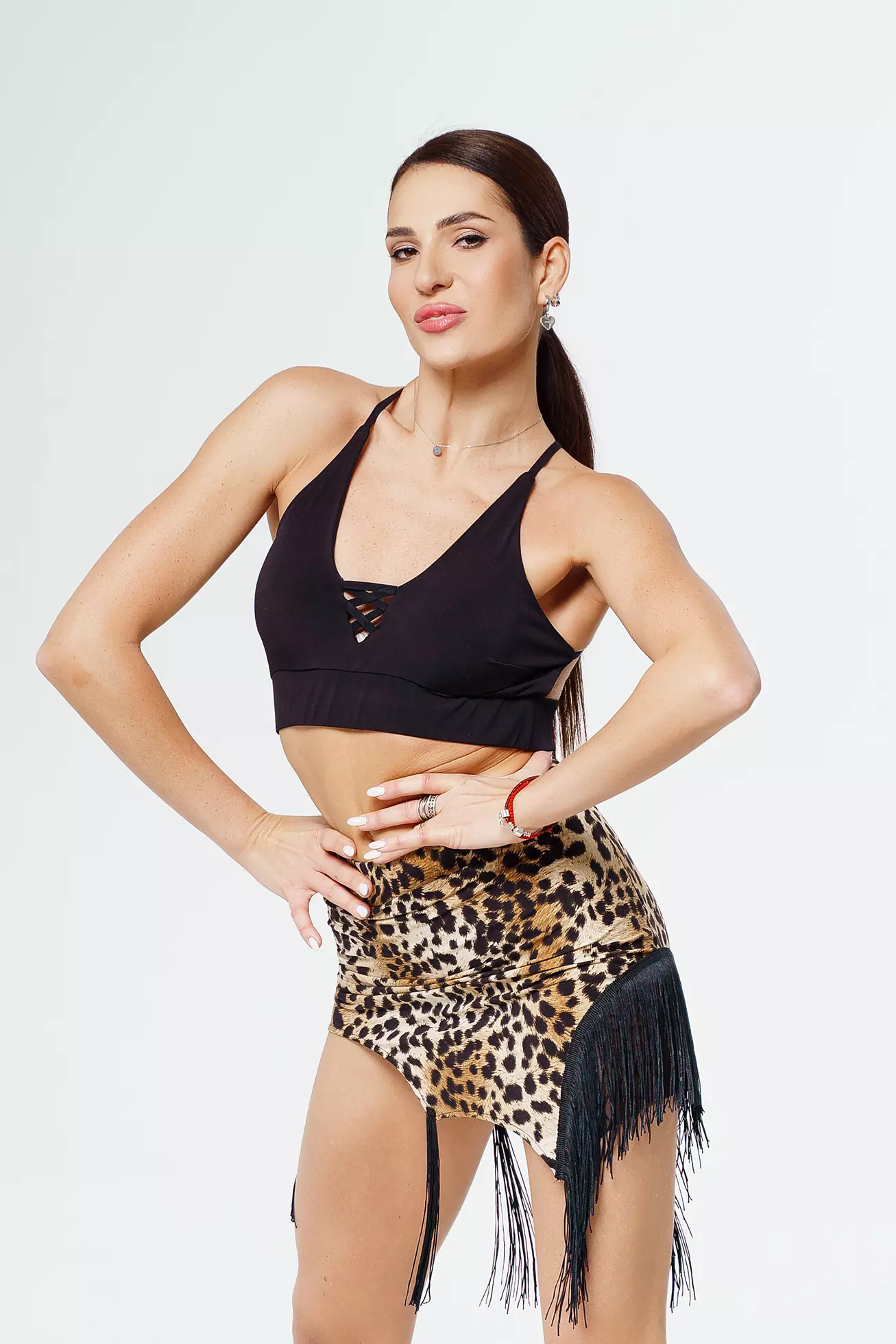
Section 2: Types of Practice Skirts
Now that we’ve explored the benefits of dancing in a practice skirt, let’s delve into the exciting variety of styles available. From short and flirty to long and flowing, there’s a dance skirt to suit every dancer’s needs and preferences. This section provides an overview of the different types of practice skirts, helping you navigate the options and find the perfect style to enhance your movement and express your personal style. Get ready to discover the perfect skirt to add to your dance wardrobe!
2.1 Short Skirts
Short dance skirts, typically falling above the knee, are a popular choice for various dance genres, including ballet, jazz, and contemporary. They offer maximum freedom of movement for the legs, making them ideal for showcasing intricate footwork and executing dynamic movements.
Here are some common types of short skirts:
- Ballet skirts:
- Often made from lightweight, sheer fabrics like chiffon or mesh.
- Can be wrap-style or pull-on.
- Create a delicate, flowing effect that enhances the lines of the body.
- Jazz skirts:
- May be made from a variety of fabrics, including stretch blends, mesh, or even fringe.
- Often feature asymmetrical hemlines, slits, or other design details that add visual interest.
- Character skirts:
- Used in various dance styles for specific character roles.
- Often feature fuller skirts with multiple layers of fabric.
Short dance skirts are particularly well-suited for:
- Showcasing legwork: The shorter length allows for a clear view of the legs and feet, making them ideal for styles that emphasize intricate footwork.
- Warm weather: They provide excellent ventilation and keep you cool during intense practice sessions.
- Petite dancers: Short skirts can help create the illusion of longer legs.
Fashion Dance offers a delightful collection of short dance skirts in various styles and fabrics, perfect for adding a touch of flair to your practice wardrobe.
2.2 Medium-Length Skirts
Medium-length skirts, typically falling between the knee and the mid-calf, offer a balance of coverage and freedom of movement. These skirts are a versatile choice for various dance genres, providing a graceful flow without being overly restrictive. A popular example is the circle skirt, known for its full, flowing shape that creates beautiful movement when spinning and turning.
Here’s a closer look at medium-length skirts:
- Coverage and movement: They provide more coverage than short skirts while still allowing for a good range of motion. This makes them suitable for dancers who prefer a bit more modesty or for styles that involve floor work.
- Flattering silhouette: Medium-length skirts, especially circle skirts, tend to be universally flattering, creating a graceful and elegant silhouette.
- Versatility: They can be dressed up or down, making them suitable for both practice and performance.
Flowing skirts of this length are particularly well-suited for:
- Lyrical and contemporary dance: The movement of the skirt enhances the fluidity and expressiveness of these styles.
- Ballroom practice: Provides a sense of the movement and drape that will be experienced in longer ballroom gowns.
- Dancers seeking a balance: They offer a compromise between the freedom of short skirts and the coverage of long skirts.
Fashion Dance offers a range of beautiful medium-length skirts, including elegant circle skirts, crafted from high-quality fabrics that drape and flow beautifully.
2.3 Long Skirts
Long dance skirts, typically falling to the ankle or floor, create a dramatic and elegant silhouette, perfect for styles like ballroom, lyrical, and some contemporary dances. These skirts add a sense of grandeur and fluidity to your movements, enhancing the visual impact of your performance.
Here’s what makes long skirts special:
- Dramatic flow and movement: The length and fullness of these skirts create a beautiful, flowing effect, particularly during turns and spins. They add a sense of drama and sophistication to your dancing.
- Elegant silhouette: Long skirts elongate the body and create a graceful, flowing line.
- Ballroom skirt: This is perhaps the most common application of a long skirt. The skirt will help the dancer get accustomed to the feel of a full gown.
Long dance skirts are particularly well-suited for:
- Ballroom dance: They provide a sense of the weight and movement of a full-length gown, helping dancers prepare for performances.
- Lyrical and contemporary: The flowing fabric can enhance the expressiveness of these styles.
- Creating a sense of drama: Long skirts can add a touch of theatricality and elegance to your practice.
When choosing a long dance skirt, consider:
- Fabric: Lightweight fabrics like chiffon or georgette will flow beautifully, while heavier fabrics like velvet can add a sense of richness and drama.
- Fullness: The fullness of the skirt will affect its movement and overall look. A fuller skirt will create more dramatic movement, while a slimmer skirt will offer a more streamlined silhouette.
- Safety: Ensure the length is appropriate so that you do not trip over it during movement.
Fashion Dance offers a selection of exquisite long dance skirts, perfect for adding a touch of elegance and drama to your practice sessions.
2.4 Wrap Skirts
Wrap dance skirts are a versatile and popular choice among dancers of all levels. Their adjustable design allows for a customizable fit and a variety of styling options, making them a practical and stylish addition to any dance wardrobe.
Here’s what makes wrap skirts so appealing:
- Adjustable fit: Wrap skirts typically feature ties or a button closure that allows you to adjust the fit to your exact waist size. This is particularly helpful for dancers whose weight fluctuates or for those who are in between sizes.
- Versatile styling options: You can tie a wrap skirt in various ways to create different looks, from a simple knot to a more elaborate bow. You can also adjust the overlap of the fabric to create a higher or lower slit, depending on your preference.
- Easy to put on and take off: Wrap skirts are quick and easy to put on and take off, making them a convenient option for changing between classes or rehearsals.
- Flattering silhouette: The wrap design can create a flattering silhouette on a variety of body types, accentuating the waist and creating a flowing line.
Wrap dance skirts are available in a wide range of lengths, from short to long, and in various fabrics, from sheer chiffon to more substantial knits. They are a popular choice for ballet, modern, and contemporary dance. They are also great for quickly covering up before and after class. At Fashion Dance, you can find a variety of wrap dance skirts to suit your individual style and needs.
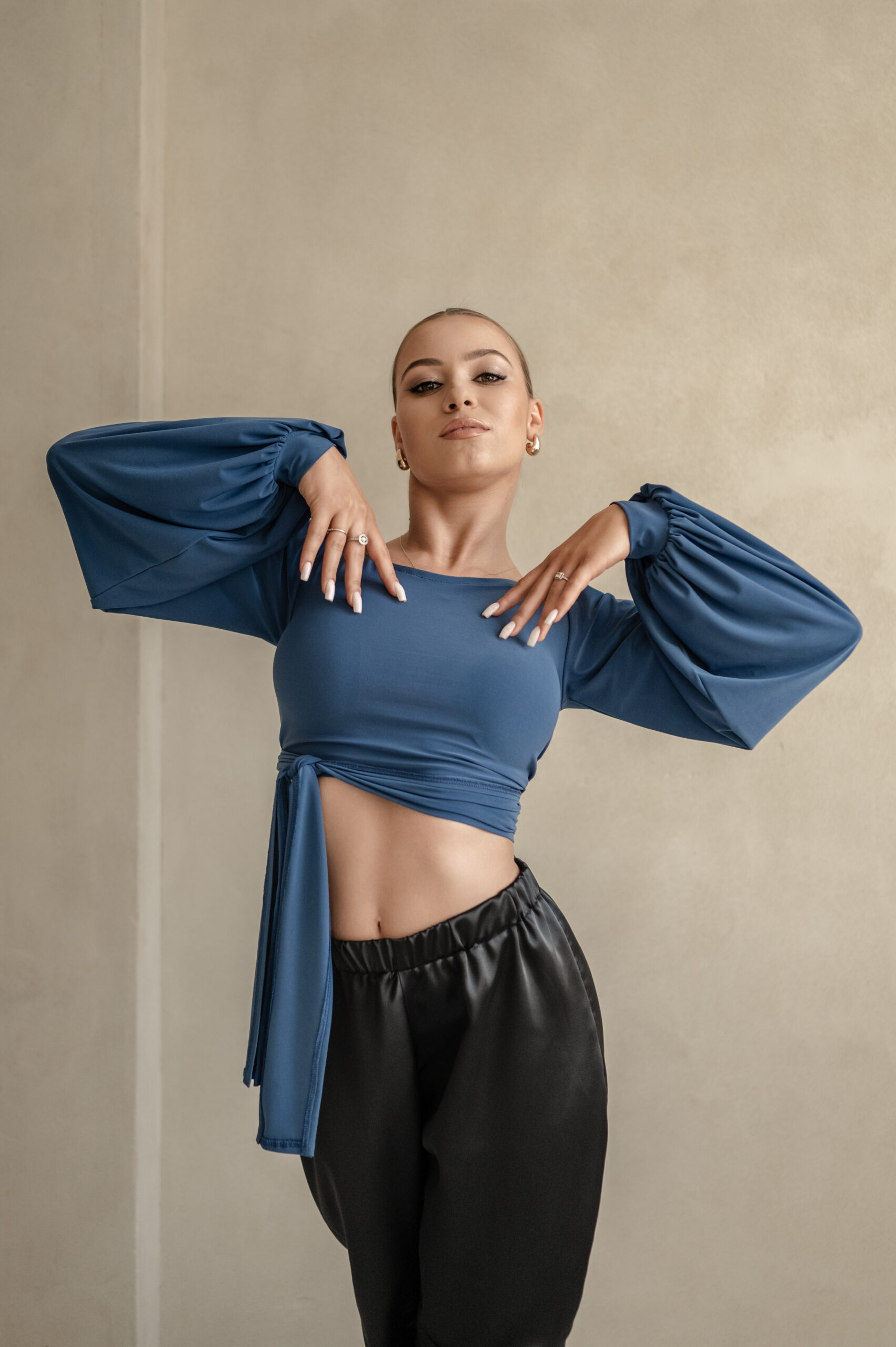
Section 3: Choosing the Right Fabric and Fit
Once you’ve decided on the type of practice skirt that best suits your needs, it’s time to consider the fabric and fit. These two factors play a crucial role in ensuring your skirt is comfortable, functional, and flattering. This section explores the importance of choosing lightweight and breathable fabrics and finding the right length and fit to enhance your dance practice experience. Let’s find the perfect combination of fabric and fit to make you feel confident and ready to move!
3.1 Lightweight and Breathable Fabrics
When it comes to practice skirts, choosing the right fabric is paramount. Lightweight and breathable fabrics are essential for keeping you cool, comfortable, and unrestricted during dance practice, especially during more intense routines or in warmer weather.
Here are some ideal fabric choices for dance skirts:
- Chiffon: A sheer, lightweight fabric that drapes beautifully and creates a flowing, ethereal look. It’s often used for ballet skirts and lyrical dance.
- Mesh: Offers excellent breathability and ventilation, making it a popular choice for various dance styles. It can add a modern touch to a skirt’s design.
- Georgette: Similar to chiffon but slightly heavier, offering a more substantial drape while still being lightweight and airy.
- Lightweight knits: Jersey and other lightweight knits offer a comfortable stretch and good breathability.
Comfortable and breathable materials like these allow for optimal airflow, helping to regulate your body temperature and prevent overheating. They also tend to be moisture-wicking, pulling sweat away from your skin to keep you dry and comfortable.
When choosing a fabric, consider:
- Dance style: Ballet often utilizes chiffon and mesh, while contemporary or jazz might incorporate more knits.
- Climate: If you live in a hot, humid climate, prioritize breathability.
- Personal preference: Some dancers prefer the feel of natural fibers, while others prefer the performance benefits of synthetics.
Fashion Dance carefully selects fabrics for their practice skirts, prioritizing those that are lightweight, breathable, and offer excellent drape and movement, ensuring you stay comfortable and focused on your dancing.
3.2 Finding the Right Length and Fit
Once you’ve chosen a breathable fabric, finding the right length and fit for your practice skirt is crucial for both comfort and aesthetics. The ideal length and fit will depend on your personal preference, body type, and the specific requirements of your dance style.
Here’s a guide to finding the perfect fit:
- Skirt length:
- Short skirts: Offer maximum freedom of leg movement, ideal for showcasing intricate footwork.
- Medium-length skirts: Provide a balance of coverage and movement, flattering for most body types.
- Long skirts: Create an elegant, flowing silhouette, perfect for ballroom or lyrical styles.
- Fit:
- Waistband: Should fit snugly but comfortably around your natural waist, without digging in or restricting movement. Wrap skirts offer the most adjustable fit.
- Hips: The skirt should drape smoothly over your hips without being too tight or too loose.
- Overall silhouette: Consider your body shape and choose a skirt style that flatters your figure. A-line and circle skirts are universally flattering, while wrap skirts can accentuate the waist.
Enhancing your body shape with the right skirt can boost your confidence and make you feel more graceful and elegant on the dance floor. Experiment with different skirt lengths and styles to find what makes you feel most comfortable and confident.
When choosing a practice skirt, consider:
- Your dance style: Different styles may call for different lengths and silhouettes.
- Your body type: Choose a style that flatters your figure and makes you feel good.
- Your personal preference: Ultimately, the best skirt is the one that makes you feel confident and comfortable.
At Fashion Dance, we offer a wide range of practice skirts in various lengths, fits, and styles, designed to flatter different body types and enhance your dance experience. Our knowledgeable staff can also help you find the perfect fit for your individual needs.
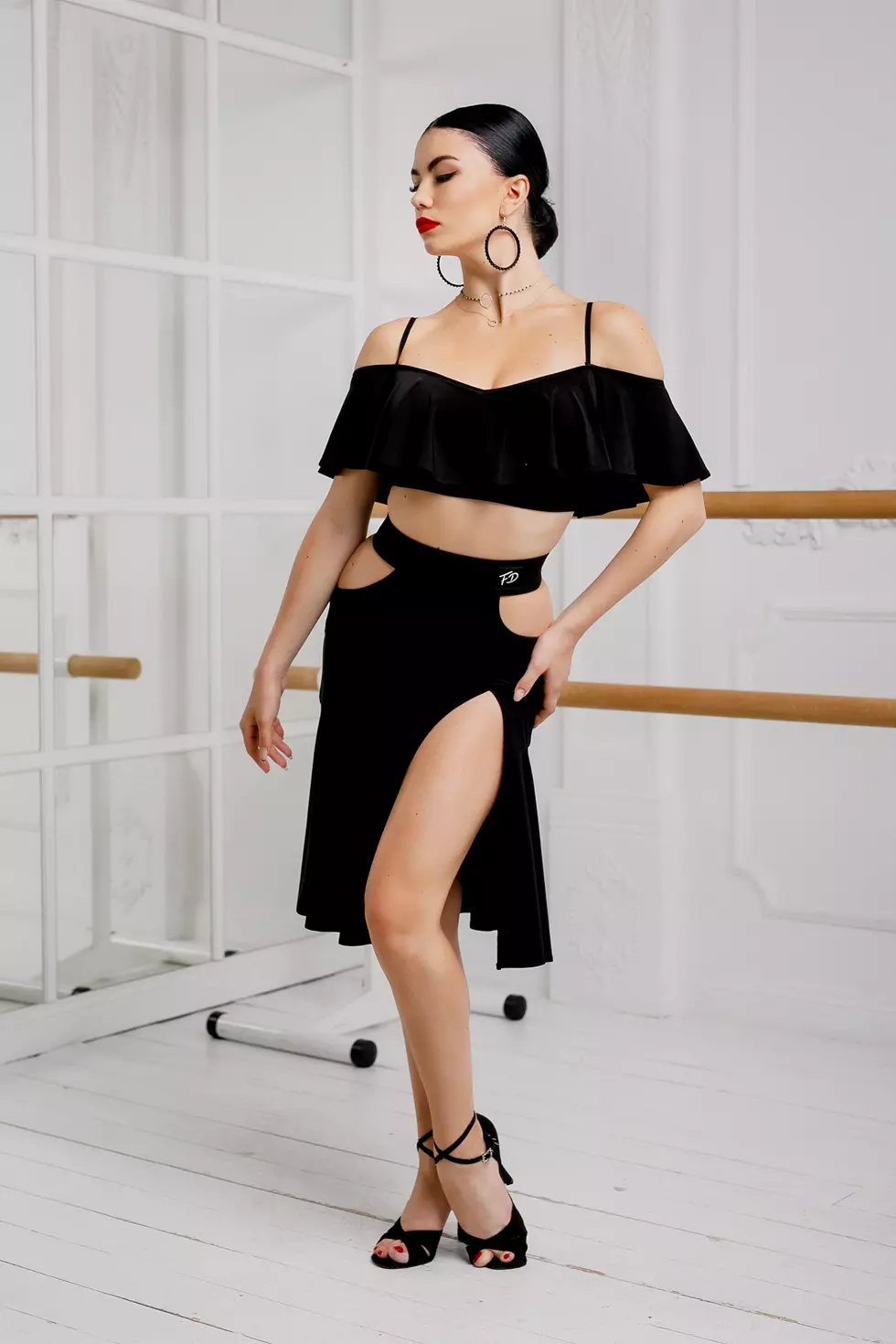
Section 4: Styling Your Practice Skirt
You’ve found the perfect practice skirt – now it’s time to style it! This section offers tips on pairing with leotards and tops and accessorizing your outfit to create a variety of looks for your dance practice. From coordinating colors and styles to adding those finishing touches, we’ll help you create practice ensembles that are both functional and fashionable. Let’s explore how to elevate your dance style with the right combinations!
4.1 Pairing with Leotards and Tops
The beauty of a practice skirt lies in its versatility. It can be paired with a variety of leotards and tops to create countless stylish and functional looks for your dance practice.
Here’s a guide to creating different looks by matching tops and skirts:
- Matching colors:
- Monochromatic: Pairing a skirt with a leotard or top in the same color creates a streamlined and elegant look.
- Complementary colors: Choosing colors opposite each other on the color wheel (e.g., blue and orange, red and green) creates a vibrant and eye-catching combination.
- Analogous colors: Selecting colors that are next to each other on the color wheel (e.g., blue and green, red and orange) creates a harmonious and pleasing aesthetic.
- Matching styles:
- Classic: A simple black leotard paired with a flowing chiffon skirt creates a timeless ballet look.
- Modern: A crop top and a high-waisted skirt can create a contemporary and stylish silhouette.
- Romantic: A lace-trimmed leotard paired with a long, flowing skirt evokes a romantic and feminine feel.
- Coordinating colors and styles:
- Consider the neckline of your leotard or top and choose a skirt that complements it. For example, a high-neck leotard might pair well with a shorter skirt to balance the coverage.
- Think about the overall silhouette you want to create. A fitted top paired with a flowing skirt can create a balanced and flattering look.
Fashion Dance offers a wide selection of leotards and tops in various colors, styles, and fabrics, making it easy to find the perfect match for your practice skirt. Experiment with different combinations to discover your signature style and create looks that make you feel confident and ready to dance!
4.2 Accessorizing Your Outfit
Once you’ve paired your practice skirt with the perfect leotard or top, it’s time to add the finishing touches! Accessorizing your outfit can elevate your look, adding both style and functionality to your dance practice ensemble.
Here are some accessories to consider:
- Dance belts: These elastic belts can be worn over a leotard or top to cinch the waist and create a more defined silhouette. They can also add a pop of color or visual interest to your outfit.
- Tights: While often considered a necessity rather than an accessory, tights can also be a style element. Consider different colors like pink, black, or even white.
- Shoes: The right dance shoes are essential for both safety and performance. Make sure your shoes are appropriate for your dance style and that they fit properly.
- Hair accessories: Keep your hair neatly out of your face with headbands, hair ties, or clips. You can choose accessories that match your outfit or add a touch of sparkle.
- Warm-up gear: Leg warmers and a light cardigan or dance jacket are great accessories for keeping warm and adding style to your look.
Completing your practice look with the right accessories can enhance both your style and your comfort. Remember to choose accessories that are functional, comfortable, and appropriate for your dance style. With the right finishing touches, your dance look will be complete.
Conclusion
The practice skirt is a versatile and valuable addition to any dancer’s wardrobe. It offers a unique blend of freedom of movement, comfort, and style that can enhance your dance practice in numerous ways. By carefully choosing the perfect practice skirt and considering factors like type, fabric, fit, and styling, you can elevate your training experience and express your personal style. From the graceful flow of a long ballroom skirt to the playful twirl of a short jazz skirt, the right skirt can help you feel more confident, connected to your body, and ready to embrace the joy of dance. So, spin and twirl with ease and style, knowing you’ve chosen the perfect practice skirt to support you on your dance journey!
Explore a wider range of practice wear options and tips in our comprehensive guide to Dance Practice Wear: Comfort and Style for Every Move.
How do I care for my dance practice skirts to ensure they last?
Proper care is essential to ensure the longevity and maintain the appearance of your dance practice skirts. Always refer to the garment’s care label for specific instructions, as different fabrics may require different care methods. Generally, it’s best to wash dance skirts in cold water using a mild detergent. Avoid using bleach or fabric softener, as these can damage the fabric’s fibers and elasticity. Hand washing is the gentlest method, especially for skirts with delicate fabrics or embellishments. If machine washing, use a delicate cycle and place the skirt in a mesh laundry bag to protect it from snagging.
After washing, air drying is highly recommended. Lay the skirt flat on a clean towel or hang it to dry, avoiding direct sunlight, which can cause colors to fade. Avoid wringing or twisting the skirt, as this can damage the fabric and alter its shape. If the care label permits tumble drying, use a low-heat or no-heat setting. However, air drying is always the safest option.
For skirts with embellishments like sequins or rhinestones, extra care should be taken. Turn the skirt inside out before washing, and hand wash whenever possible. Avoid rubbing or scrubbing the embellished areas.
Proper storage is also important for maintaining the shape and condition of your skirts. Store them in a cool, dry place, away from direct sunlight and humidity. Hang skirts on padded hangers to prevent wrinkles and maintain their shape. For long-term storage, consider using a breathable garment bag.
Regularly inspect your skirts for any signs of damage, such as loose threads, snags, or tears. Address these issues promptly to prevent them from worsening. By following these care tips, you can help your dance practice skirts last longer, ensuring they remain beautiful and functional for many practices to come.
What’s the difference between a practice skirt and a performance skirt?
While both practice skirts and performance skirts are designed for dance, they serve different purposes and often have distinct characteristics. Practice skirts are primarily designed for comfort, functionality, and durability during training sessions. They are typically made from lightweight, breathable fabrics that allow for ease of movement and can withstand frequent washing. The focus is on practicality, allowing dancers to move freely and comfortably during rehearsals and classes. Practice skirts may feature simpler designs and embellishments compared to performance skirts.
Performance skirts, on the other hand, are designed to enhance the visual impact of a dance performance. They are often made from more elaborate fabrics, such as satin, silk, or richly embellished materials, and may feature intricate designs, sequins, rhinestones, or other decorative elements. Performance skirts are typically tailored to the specific choreography and style of the dance, contributing to the overall aesthetic and storytelling of the piece.
In essence, practice skirts prioritize comfort and practicality for everyday training, while performance skirts are created for show, emphasizing visual appeal and stage presence. Practice skirts are the workhorses of a dancer’s wardrobe, built for durability and ease of movement. Performance skirts are the showpieces, designed to dazzle and enhance the artistry of the dance. While some skirts might be versatile enough for both practice and performance, it’s generally recommended to have separate skirts for each purpose. This ensures that your performance skirts remain in pristine condition for shows, while your practice skirts can withstand the rigors of regular training.
Can I wear a practice skirt outside of the dance studio?
Yes, many styles of practice skirts can be worn outside the dance studio, offering a comfortable and stylish option for various occasions. The key is to choose the right type of skirt and style it appropriately for the setting. Medium-length and long skirts made from jersey, modal, or other soft, drapey fabrics can easily transition to casual or even semi-formal wear. Wrap skirts, depending on the fabric and length, can be quite versatile for everyday wear. Simple designs with minimal embellishments and in solid colors or subtle prints are more adaptable to different settings.
To style a practice skirt for outside the studio, pair it with a casual top like a simple t-shirt, tank top, or fitted sweater to create a balanced and relaxed look. Add a jacket such as a denim jacket, cardigan, or blazer to instantly elevate the outfit and make it more appropriate for non-dance settings. Footwear is also key; swap your dance shoes for sandals, sneakers, flats, or even boots, depending on the skirt style and the occasion. Accessorize to complete your look and add a touch of personal style with jewelry, a scarf, or a belt.
Consider the fabric. Avoid fabrics that are too sheer or obviously “dancewear-specific,” like certain types of mesh or very shiny spandex, for everyday wear. Length is also important. Shorter skirts might be less appropriate for certain settings, while longer skirts can be more versatile. Avoid skirts with excessive sequins, rhinestones, or other embellishments that might look out of place outside a dance context.
For example, a flowing, jersey midi skirt can be paired with a t-shirt and sandals for a comfortable daytime look. A wrap skirt in a solid color can be worn with a blouse and heels for a more polished outfit. A long, flowing skirt can be dressed up with a nice top and accessories for an evening event.
Ultimately, whether a practice skirt is appropriate for non-dance settings depends on its style, fabric, and how you choose to style it. With a little creativity, many practice skirts can be seamlessly integrated into your everyday wardrobe, offering a unique and comfortable alternative to traditional skirts.
How do I choose a practice skirt that’s appropriate for my skill level?
Choosing a practice skirt that’s appropriate for your skill level is primarily about considering your comfort, the specific requirements of your dance style, and your personal preferences.
Beginner Dancers:
If you’re new to dance, prioritize comfort and ease of movement. Opt for simpler designs without excessive embellishments that might be distracting or get in the way. Choose a length and style that you feel comfortable and confident in. A basic, shorter or medium-length skirt in a soft, breathable fabric is a great starting point. You might want to avoid very long skirts until you’re more accustomed to moving in a skirt.
Intermediate Dancers:
As you progress in your dance training, you can start to experiment with different skirt styles and lengths. You might find that certain skirts enhance specific movements or help you better understand your body’s lines and posture. At this stage, you can also start to consider skirts with more design details, such as slits, asymmetrical hemlines, or subtle embellishments.
Advanced Dancers:
Advanced dancers often have a better understanding of their personal style and what works best for their body and dance style. They might choose skirts based on the specific choreography they’re working on or the aesthetic they want to achieve. Advanced dancers might also opt for more specialized skirts, such as those designed for specific ballroom styles or those with unique design features.
General Considerations:
Dance Style: Different dance styles have different requirements. For example, ballet often involves shorter skirts to show the lines of the legs, while ballroom might call for longer, flowing skirts.
Personal Preference: Ultimately, the best skirt is the one that makes you feel comfortable and confident.
Instructor Guidance: If you’re taking classes, your instructor can provide valuable guidance on appropriate skirt styles for your skill level and dance genre.
Fashion Dance offers a wide range of practice skirts suitable for dancers of all levels. We have simple, classic designs for beginners, as well as more elaborate styles for intermediate and advanced dancers. Our skirts are made from high-quality fabrics that are designed to move with you, ensuring both comfort and style in the studio.
No matter your skill level, the right practice skirt can enhance your dance experience, allowing you to move freely, express yourself, and feel confident in every step.
What are some tips for building a cost-effective dance skirt wardrobe?
Building a cost-effective dance skirt wardrobe doesn’t mean sacrificing style or quality. It’s about making smart choices and prioritizing versatility. Here are some tips for creating a functional and affordable collection of dance skirts:
Start with the Basics: Invest in a few versatile skirts in neutral colors like black, navy, or gray. These can be easily paired with different tops and accessories, creating a variety of looks. Choose classic styles that won’t go out of fashion, such as a simple A-line or a wrap skirt in a medium length.
Look for Sales and Discounts: Take advantage of sales, clearance sections, and discount codes. Sign up for email newsletters from your favorite dancewear brands to stay informed about promotions.
Consider Versatility: Choose skirts that can be worn for multiple dance styles or even outside the studio. A flowy jersey skirt, for example, could work for contemporary, lyrical, and even casual wear.
Mix and Match: Invest in skirts that can be easily mixed and matched with different tops and leotards you already own. This will allow you to create a wider range of outfits without having to buy as many pieces.
Shop Online: Online retailers often offer a wider selection of dance skirts at competitive prices. Websites like Fashion Dance frequently have sales and promotions, making it easier to find affordable options. Be sure to check the size charts and read reviews before ordering.
Check for Quality: While it’s important to find affordable options, don’t compromise on quality. Look for well-made skirts from reputable brands that use durable fabrics. A well-made skirt will last longer, saving you money in the long run.
Consider Secondhand Options: Look for gently used dance skirts at consignment shops, online marketplaces, or even from fellow dancers. This can be a great way to find high-quality skirts at a fraction of the original price.
Take Care of Your Skirts: Proper care can significantly extend the life of your dance skirts. Follow the care instructions on the label, and store your skirts properly to prevent damage.
DIY or Upcycle: If you’re crafty, you can try making your own dance skirts from affordable fabrics. You can also upcycle old skirts or dresses into new dance skirts by altering the length, adding embellishments, or combining different fabrics.
By following these tips, you can build a stylish and functional dance skirt wardrobe without breaking the bank. Remember that the most important thing is to choose skirts that make you feel comfortable and confident, allowing you to fully express yourself through dance
